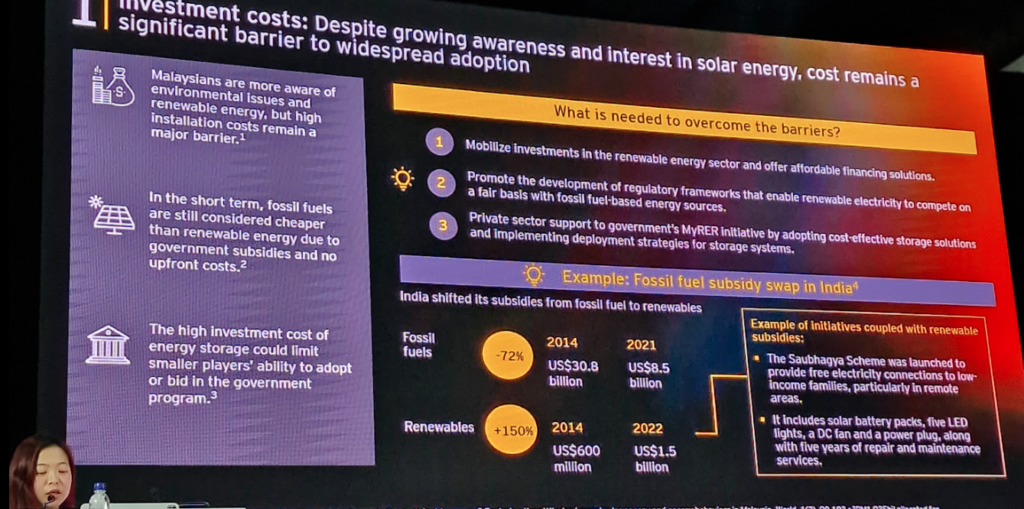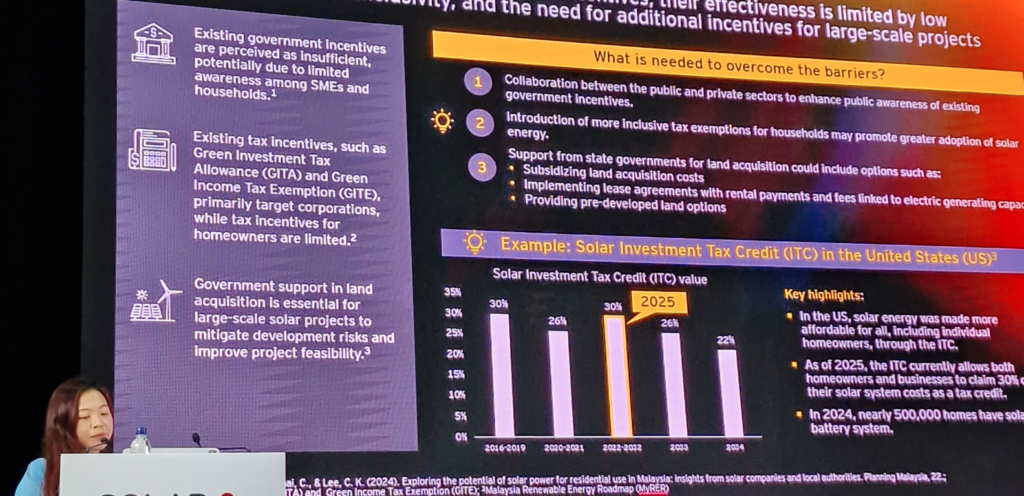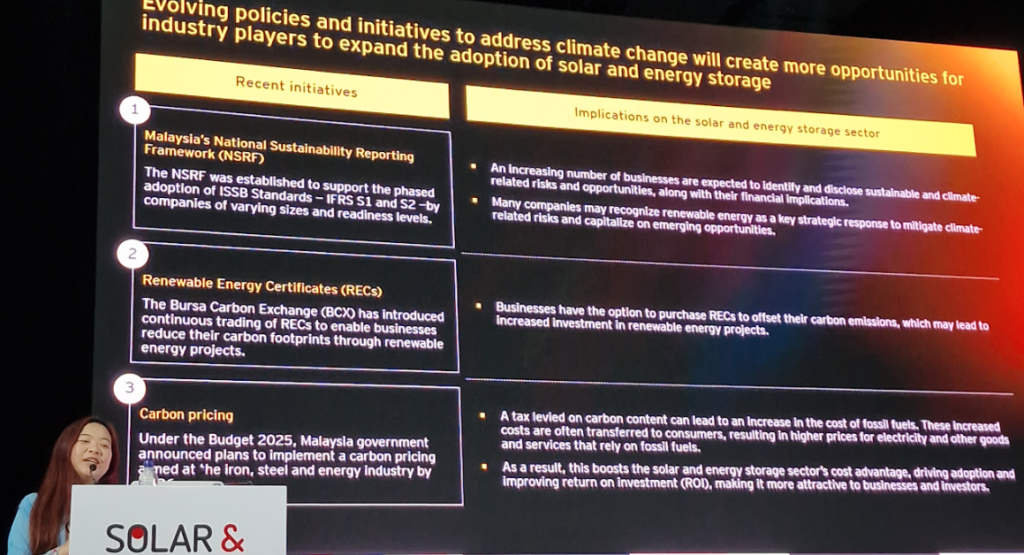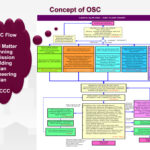**Opinion piece – Solar and Storage event at Mitec in Malaysia
TL:DR: The overall message was that Solar is a part of the strategy being considered in Malaysia from official channels. The message from vendors were regulations and bureaucracy was hampering efforts on all levels.

The long anticipated Solar & Storage event on the 9th and 10th was held at the Malaysia International Trade and Exhibition Centre (Mitec) in Kuala Lumpur. There were 38 vendors at the event and 3 stages with various speakers.

In the opening main session Dr Sanjayan Velautham of Suruhanjaya Tenanga Malaysia (STM) talked about grid reliability as a precursor requirement for any solar storage and grid safety being the primary reason why (so many) permits are required.

Dr Sanjayan Velautham then mentioned that the process ONLY takes 30 days – 🙂 – and the metric is tracked. As a side note he also said, as a preemptive warning, that if ALL the paperwork and requirements are not fully met then the process will be much (much) longer. So in effect, any submission MUST be vetted and fully complete before the submission process starts thereby providing some insight into the vast amount of work needed before this crucial, KPI tracked process. In addition there is no obvious differentiator mentioned, as far as bureaucracy is concerned, between Self Consumption of Solar Energy (SELCO), Large Scale Solar (LSS), Corporate Green Power Programme (CGPP) and the Corporate Renewable Energy Supply Scheme (CRESS). One of these are not like the others and that is what most people, as voiced by Davis Chong of the Malaysian Photovoltaic Industry Association (MPIA), in a very diplomatic way, was concerned about when it comes to innovation and speed to market in Malaysia.
It was interesting listening to the views of Elina Jani of GreenTech Ideaslab Sdn Bhd (Malaysian Green Technology & Climate Change Corporation). In summary, she eluded that Solar is but one of the technologies being considered and it was not that high on the agenda. Nuclear power was much higher and so was Flow Batteries. This is important to understand in the context of this event. Solar is not that important however, battery storage is important.
**Opinion – The summary of the session – my opinion based on what I heard.
Solar innovation is being stifled by elongated government processes, that is getting slightly better than before, and is hampering deployments, specifically where SELCO is concerned. The old notion of pumping extra power into the national grid for some discount has been negated by modern battery storage systems that store the energy for later LOCAL use. The huge process requirements by STM is based on the fact that energy coming back into the grid may cause disruption and damage the national grid and that would be unacceptable and understandable. However, most SELCO systems are specifically engineered not to do that. It seems STM is stuck in the older methodology where as modern storage systems removes the need to do this. So, is solar the way forward in Malaysia? I think one of the questions asked will answer that.
The moderator, Professor Datin Lorela Chia from Malaysia Association of Sustainable Supply Chain & Innovation (MASSCI) was very knowledgeable and provided fantastic mediation and a summary of all points very well.

There was a question and answer session using a QR code on SLIDO and here are the top questions posed.
Anonymous 4 Votes
Is there any sights that the government will be implementing mandatory usage of renewable energy for data centers?
Anonymous 4 Votes
Can we have something similar in Malaysia, our own Department of Government Efficiency, to ramp up local government authorities approval for RE Projects
Anonymous 3 Votes
Can we realistically achieve Net Zero by 2050 relying on renewable energy, especially solar, or do we still need nuclear?
Anonymous 3 Votes
Any policies set to handle the clean energy waste/battery/infrastructure? This could be another emerging issue in the next 5-10 years
Anonymous 3 Votes
How is the current pick up based on new regulation for SELCO?
Anonymous 3 Votes
Why is Singapore installing a cable all the way to Northern Australia to get solar power when Malaysia is next door?
Anonymous 2 Votes
How do you marry the growing demand for energy generation with the rapid development of data centres, with the 70% RE target?
Additional sessions – Critical trends, emerging technologies, market landscapes and the impact on solar renewable energy. – Arina Kok – Ernst & Young Consulting.
Yes, the long title is indicative of the very busy slides provided.



Agenda:
01 Regional and national energy landscape: Market trends and drivers
02 Current disconnect: Barriers to expanding solar photovoltaic (PV) and energy storage development
03 Leveraging opportunities in solar energy and energy solutions in Malaysia

This was a very busy slide so here is the summary (for Google).
| Existing government initiatives | Key development | Power |
| 1. FIT scheme | Solar PV in 2022 | .322 GW |
| 2. The Net Energy Metering (NEM) | Solar PV in 2022 under NEM 2.0 and NEM 3.0 | 1 GW |
| 3. The Self Consumption (SELCO) | Installation completed at 2020 | .09 GW |
| 4. The Large Scale Solar (LSS) | Offered under LSS PETRA 5+ | 2 GWac |
| 5. The corporate Green Power Program (CGPP) | 2023 with 32 successful applicants | .8 GW |
Key quotes:
Solar PV will play a key role in Energy Transition , with its total capacity reaching 83 GW in the Transforming Energy Scenario (TES) and 153 GW in 2050.
Malaysia has a vast wealth of renewable energy resources key amongst them being solar PV with an overall potential of around 269 GW.
**Opinion – My opinion
Really? We are in 2025 and the best metrics are from 5 years ago? 32 SUCCESSFUL applicants for CGPP? This is indicative of the STM bureaucratic requirements. Every building should be part of CGPP. These are terrible metrics when compared to other countries.

Wow, another busy slide from E&Y. Who would have guessed.
“Malaysians are more aware of environmental issues and renewable energy , but high installation costs remains a major barrier.”
“In the short term, fossil fuels are still considered cheaper than renewable energy due to government subsidies and no upfront costs”
“The high investment costs of Energy storage could limit smaller players ability to adopt or bid in the government program”
Read this and reread, especially between the lines, and use your cognitive abilities to go through each scenario. Wow.
India is sited as an example. This could easily have been Malaysia, if only…

A busy slide but a swipe at government.


Not sure E&Y gets the Three Points is Plenty for a slide.
The residential solar subscription model is interesting but fundamentally flawed. It is a NIMBY suggestion. So, you put a solar panel array on my roof but I do not own it but share with the rest in a type of Strata title? How? This is a terrible idea.
And then I walked off in disbelieve. Sorry.
The rest of the show was OK. Better than Meh, but not by much.
It really is all in the details and government interference, at all levels, making sure everyone can get a cut. Innovation is stifled out the door in a great big shove.
Here is a photo from the STM booth that shows how little Solar is being considered in Malaysia. They did not even put a number on Solar. This is the bottom line, no matter with every one says. Also, it is MW and GW so its pathetic really.

 Previous Post
Previous Post